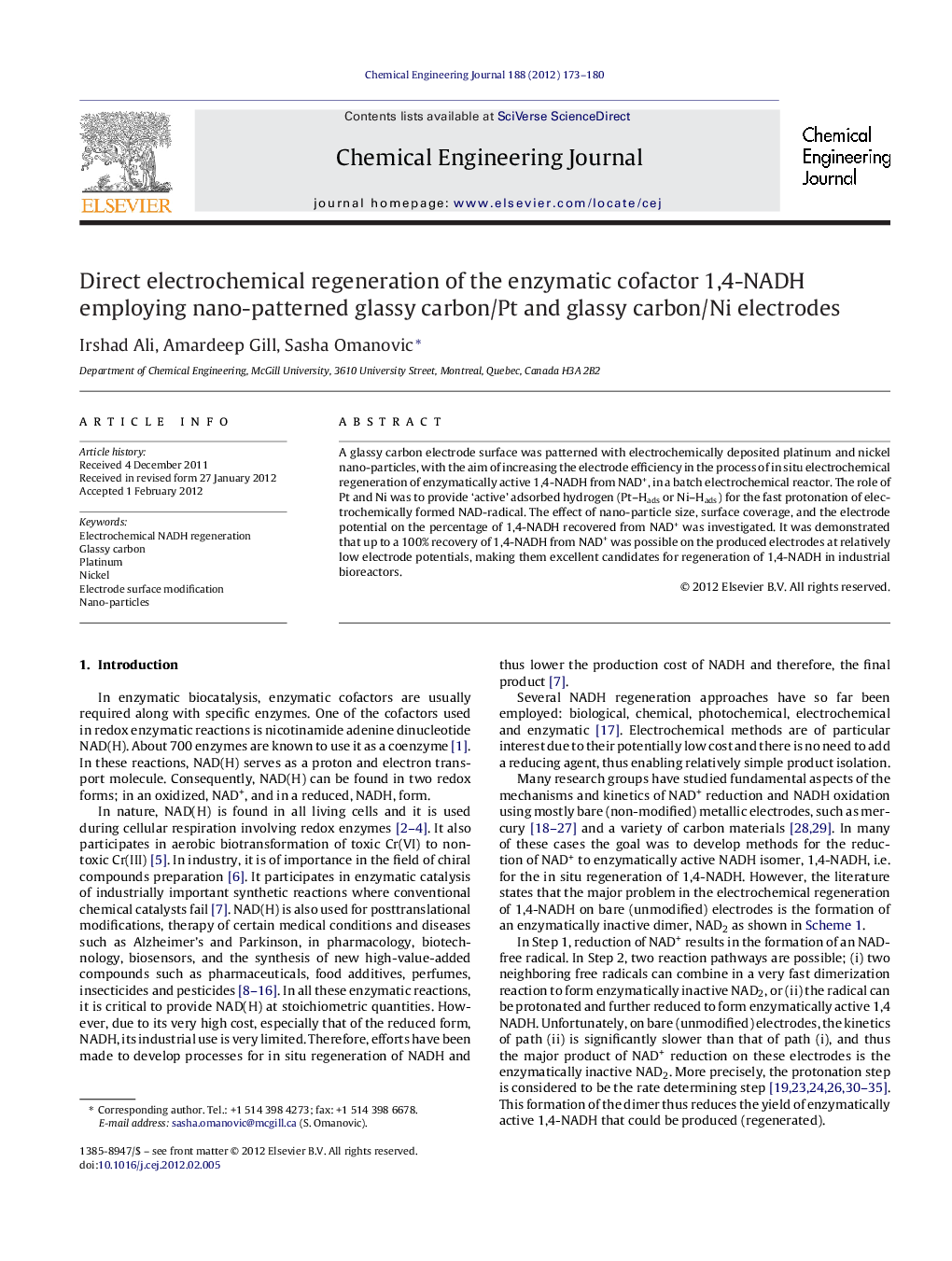| Article ID | Journal | Published Year | Pages | File Type |
|---|---|---|---|---|
| 150023 | Chemical Engineering Journal | 2012 | 8 Pages |
A glassy carbon electrode surface was patterned with electrochemically deposited platinum and nickel nano-particles, with the aim of increasing the electrode efficiency in the process of in situ electrochemical regeneration of enzymatically active 1,4-NADH from NAD+, in a batch electrochemical reactor. The role of Pt and Ni was to provide ‘active’ adsorbed hydrogen (Pt–Hads or Ni–Hads) for the fast protonation of electrochemically formed NAD-radical. The effect of nano-particle size, surface coverage, and the electrode potential on the percentage of 1,4-NADH recovered from NAD+ was investigated. It was demonstrated that up to a 100% recovery of 1,4-NADH from NAD+ was possible on the produced electrodes at relatively low electrode potentials, making them excellent candidates for regeneration of 1,4-NADH in industrial bioreactors.
Graphical abstractFigure optionsDownload full-size imageDownload as PowerPoint slideHighlights► Electrochemical regeneration of 1,4-NADH from NAD+ was performed. ► Glassy carbon patterned with Pt or Ni nano-particles was used as a working electrode. ► Pt and Ni provided ‘active’ hydrogen for the fast protonation of NAD-radical. ► Up to a 100% recovery of 1,4-NADH from NAD+ was achieved.
